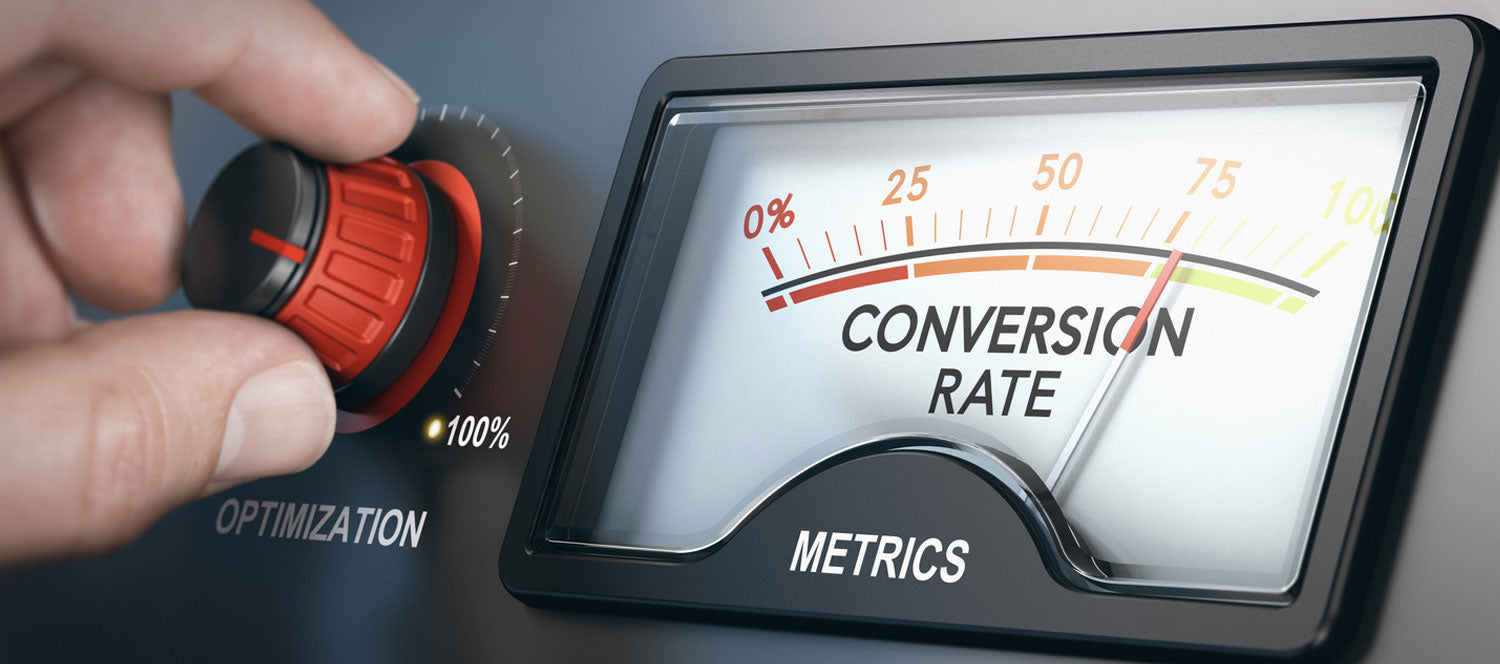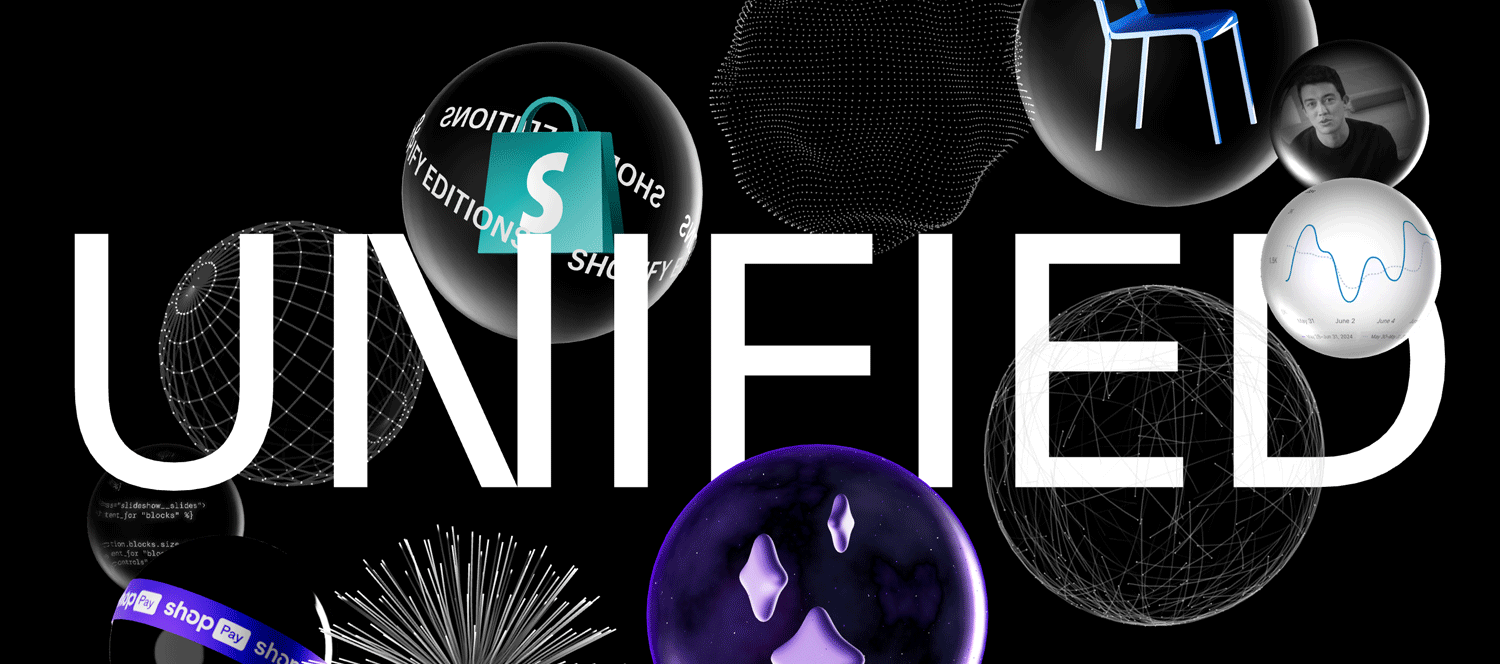Any industry comes with its own unique language and acronyms so we thought it might be appreciated if we put together a brief glossary of common terms and words that you may come across in the world of websites, Shopify and e-commerce.
We have purposely kept the definitions simple to be used as a quick, easy point of reference.
A
Above the scroll - taken from the term 'above the fold' used in print media, this terms is used to describe the portion of a webpage that is visible before the user needs to scroll down.
A/B testing - also referred to as split testing, allows you to compare the performance of two different options to see which delivers the best results.
Abandoned Cart Recovery - the process of re-engaging customers who have left items in their cart but not checked out.
Accessibility - making sure your website can be used by as many people as possible regardless of a disabililty or impairment.
Affiliate marketing - is a performance-based marketing strategy where creators, influencers, and entrepreneurs earn money by promoting a product or service for a retailer.
AI - Artifical Intelligence - technology that enables computers and machines to simulate human intelligence and problem-solving capabilities.
Anchor text - the visible, clickable text of a link.
AOV - Average Order Value for each order placed.
API - short for Application Programming Interface - where software programmes communicate and intereact with each other.
ATC - Add To Cart, often used to define a specific button on a website e.g the ATC button.
ATC rate - Add To Cart rate - a metric showing the frequency of items getting added to carts compared to the number of unique visits or page views on the website.
Attribution - the process used to identify which marketing channels contribute to conversions/sales.
Autoresponder - the onscreen message or email that appears once a particular action is completed, such as signing up to a newsletter.
AVS - Address Verification Service a security measure used to check credit cards details.
B
B2B - Business to Business.
B2C - Business to Consumer.
Backend - the hidden part of a website that visitors can't see where content, applications, structure is accessed.
Backlink - great for SEO, backlinks are links from other sites back to yours.
Back Order - is an out of stock product that is expected to be delivered by a certain date once it is back in stock.
Bandwidth - a measure - either in bps (bits per second) or kbs (kilobits per second) of the maximum amount of data transfer across a given path.
BFCM - Black Friday Cyber Monday.
Breadcrumb - a navigational aid that shows users where they are on a website and the path they have taken to get there.
Bricks and Mortar - the term used when referring to a physical shop/store.
Browser - an application that allows you to access content on the internet - i.e. Google Chrome, Safari, Firefox.
Bounce Rate - defined as the percentage of visitors that leave a website without taking an action i.e. land on a page and then leave.
Bundles - a sales tactic of selling multiple products as a single entity.
C
Cache - is an area of computer memory in which information that is often in use can be stored temporarily and got to quickly.
Chatbot - software or interface that mimics human conversation through text or voice interactions.
Cookies - text files sent to a user’s browser related to how the customer interacts with the website.
CTA - Call To Action - the instruction on what you want the user to next - Buy Now, Sign up etc.
CTR - Click Through Rate.
CMS - Content Management System.
Conversion - the point at which a recipient of a piece of marketing takes a desired action.
CRM - Customer Relationship Management - software to manage interactions with customers.
CRO - Conversion Rate Optimisation - the process of increasing the percentage of conversions.
Customer Aquisition - the process of bringing in new clients/customers to your business.
Customer Retention - the process of retaining/keeping clients/customers in your business.
CSS - Cascading Style Sheets - a programming language.
D
DAM - Digital Asset Management - software and systems used to store, organise, manage and retrieve digital assets.
Domain Name - the text that a user types into a browser window to reach a particular website i.e. bluehorizonsmarketing.co.uk.
DNS Record - Domain Name System/Service/Server - a set of instructions used to connect domain names with internet protocol (IP) addresses within DNS servers.
Dropshipping - a form of retail business in which the seller accepts customer orders without keeping stock on hand.
E
Embedded - integrating external content into another website or page.
Encryption - is a way to scramble data so that only authorized parties can unscramble it.
F
Favicon - tiny, customisable icons displayed in the web address bar.
Flash Sale - a sale that offers discounts for a short period.
Fulfilment - the process of storing inventory, picking and packing products and shipping online orders to customers.
FBA - Fulfilment By Amazon.
G
Geo-Targeting - The process of delivering specific content to users based on their geographic location.
Google Analytics - web analytics tool you can use to track and analyse the performance of your website. You can access a wide range of data and reports on website traffic and website visitor behaviour.
H
Hosting - the process where a web hosting provider stores and maintains website files and applications on a server to make its customers' websites accessible on the internet.
HTML - Hyper Text Markup Language - the standard markup language for documents designed to be displayed in a web browser.
HTTPS- Hypertext Transfer Protocol Secure - a protocol that secures communication and data transfer between a user's web browser and a website.
Hyperlink - text or images that are highlighted in someway linking users to another webpage or website.
I
Iframe - Inline Frame - used to display one or more webpages within a webpage.
Inventory - the amount of products held in stock.
IP Address - An IP (Internet Protocol) address is a network address for your computer, so the internet knows where to send your emails and data.
J
Javascript - a scripting language for creating dynamic web page content.
K
Keyword - words or phrases that users type into a search engine to find relevant content for their query.
L
Landing Page - the page that is displayed after clicking on a link.
Longtail Keyword - a keyword phrase made up of at least three words.
M
Metadata/Metatags - HTML snippets used in web development to describe the content on a web page (for SEO). Meta tags don't appear on the pages but instead exist within the website's source code.
N
Navigation - the structure that allows visitors to move around a website.
O
Open source - software that is available for anyone to inspect, modify and enhance.
P
Page Rank - measuring where a page is ranked on a search engine. The closer to the number one spot, the higher the ranking.
Page View - the number of views a specific webpage gets over a specified period of time.
Payment Gateway - the platform that processes payments for online purchases.
PDP - Product Detail Page (the product page)
PLP - Product Listing Page (the collection page in Shopify terms)
Pixel - one of the small dots or squares that make an image on a computer screen.
Plug-in - software extentions that increase the capability of a website - in Shopify terms - Apps.
PPC - Pay Per Click - a form of paid marketing to increase traffic to your site.
R
Resolution - refers to the physical number of pixels displayed on a screen.
S
Script - a relatively short and simple set of instructions that typically automate an otherwise manual process.
SEM - Search Engine Marketing - the process of using paid advertisements.
SEO - Search Engine Optimisation - the process of enhancing websites to improve their ranking/listing with search engines.
SERP- Search Engine Results Page - the page that a search engine shows when a search term is entered
SKU - Stock Keeping Unit - a unique reference code for a product.
SSL - Secure Sockets Layer - a protocol for securing the data transfer between a user and a website that they are visiting.
Subscriptions - a business model to provide a convenient solution for customers to receive items at set intervals, so they don’t have to reorder everytime.
Supply Chain - the steps involved in getting a finished product or service to a customer.
T
Template - a collection of sections that are configured to give your website a consistent design and feel.
Traffic - referring to website traffic - measured in terms of visits/sessions.
Transaction fee - usually refers to the fee paid per transaction to the payment processing provider.
3PL - Third Party Logistics (an external provider who can help fulfil orders or hold/manage stock)
U
User Experience (UX) - how a user interacts with and experiences a product, system or service.
User Interface (UI) - the point of contact between humans and computers.
UPC - Universal Product Code - a scannable barcode found on product packaging that contains a unique identification number.
Upselling - a tactic used to encourage customers to add-on or purchase more.
W
Wholesale - the sale of goods/merchandise to retailers typically to be sold on.


